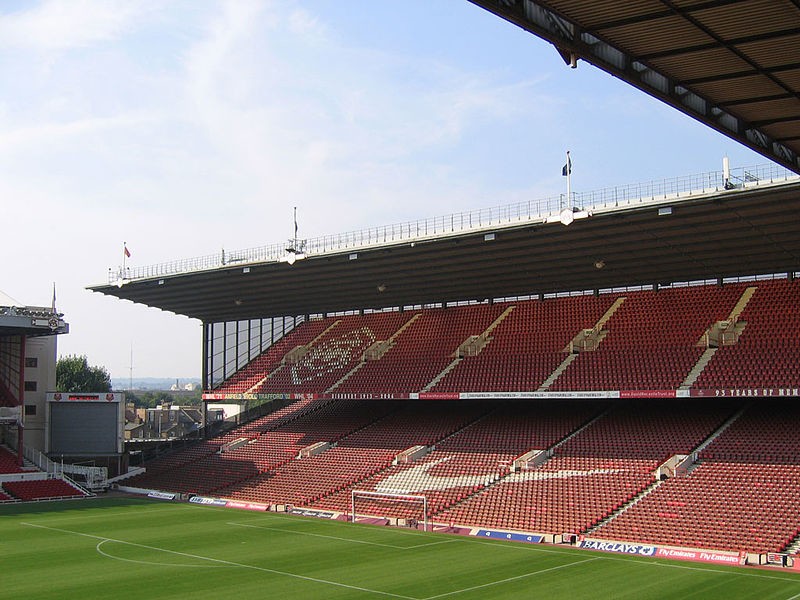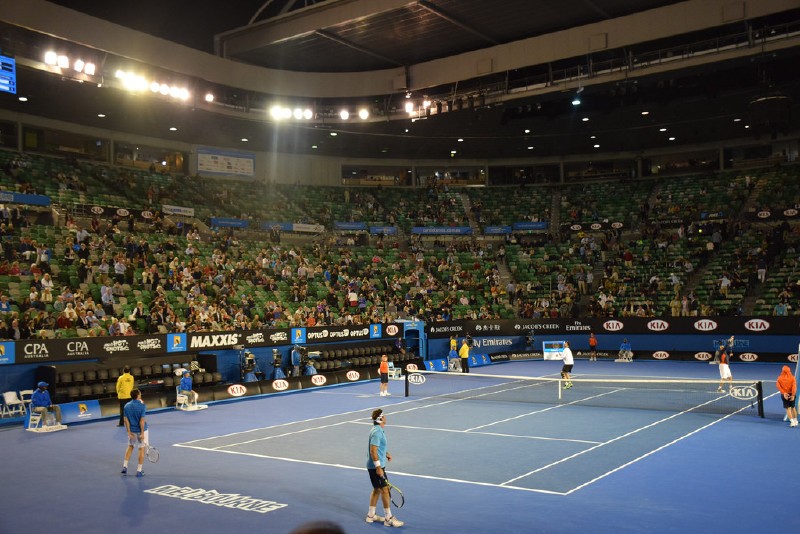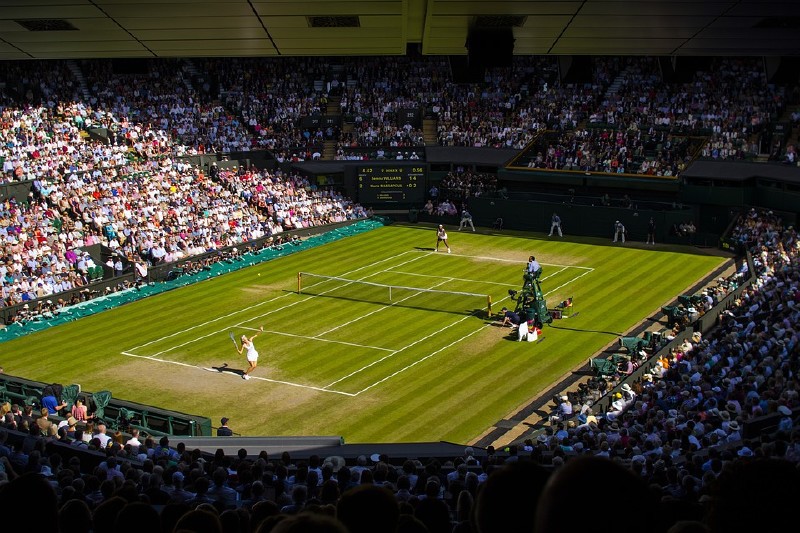Comparing the big four global tennis stadiums
source: press release; author: michał
 It seems that the pressure on global sports venues gets ever greater in the modern sporting world, today we look at the tennis world and see what the best venues have to offer.
It seems that the pressure on global sports venues gets ever greater in the modern sporting world, today we look at the tennis world and see what the best venues have to offer.
Advertisement
The host venues have to be of exemplary standard, otherwise fans, ticket paying visitors, site employees and, most importantly of all, the sporting talent themselves, will not tolerate stadiums that do not have the latest fittings and features.
Especially nowadays, with the advent of biotech fitness training, all pro athletes have a finely tuned training regime, both pre and post match, and if there isn’t an ice bath or one hundred and one other items the pros expect to have on hand at stadium gym facilities, things can begin to look shoddy. Venue owners, venue designers and venue maintenance staff work all year round to keep ahead of the global race to provide the best platforms for their pros to compete at.
In the Eighties and Nineties it would often be commented that some stadiums could just rely on the fact of historical and geographical-inherited legacy to guarantee a stadium owner a monopoly to maintain the status quo in positioning and ownership of a stadium.
But with the huge cash explosions that modern sport has provided, online betting channels, as well as massive global changes in Asia, plus the flexibility that modern cities and capitals have provided, no one is really safe and secure in the knowledge that any stadium will remain in its position of privilege with any absolute surety.
If anyone had said in the 1980s that Arsenal would ever play their home games anywhere other than the Gillespie Road venue, you would have had all types of Gunners spitting their lager on the floor outside the iconic The Gunners pub.
 The former Arsenal venue is now residential property.
The former Arsenal venue is now residential property.
But a few years later The Emirates Stadium seems a perfectly logically extension of the global pace of ever improving world sport. Meanwhile, trendy urbanite young homeowners are enjoying the slew of one and two bedroom apartments built on the old Gillespie Road site. It is a salient reminder to all stadium managers that they need to remain at the top of their game to prevent the property developer JCBs moving in. An unlikely scenario for most established venues, we agree, but never an impossible one.
Here we look at the four main stadiums of the grand slams of tennis. The grand slams are considered the pinnacle of the tennis sporting world, and each of the four venues, examined in more detail below, based in Australia, France, the United Kingdom and the USA, have at least one hundred years of history, when the sport was practically unrecognisable from the sport it is today. If any lady showed so much as an inch of ankle running for a forehand or backhand in the pre war period of the twentieth century, they would draw gasps of horror and indignation from the crowd.
Australia – Melbourne Park.
The Australian Open is held in January every year and is the pinnacle of the Asia Pacific tennis swing. Every big name in the sport hankers after this trophy and nearly every big name of the past has their name on the trophy as previous winners.
The stadium itself is a fantastic very modern piece of architecture. It is the second most modern stadium of the four grand slams, much more recent than the French Open and Wimbledon, but not as modern as the US Open, which has recently overtaken Melbourne.
 The Rod Laver Arena in Melbourne
The Rod Laver Arena in Melbourne
The main court seats 14,820 people and has a fully retractable roof. This was a full 20 years before Wimbledon became the second grand slam to have such a roof. In the global world of premier sports this is a very impressive facility to have had for such a long time over its main competitors. All the players were very pleased once the rain came that they could continue to play. Global TV revenues were also maintained because there was never any need to replay old matches which used to be the status quo in the past when rain stopped play. Players especially remark that they like the Plexipave hard court surface and the off court facilities at the venue are especially good.
Paris, France – Roland Garros.
Paris is considered by far the least impressive of the four Grand Slam venues. That isn’t to say there haven’t been some miraculous matches played over the years there. And if you were a TV viewer only, the staging looks as glamorous and exciting as any of the other three majors.
However, the main problem for the poor French is that as the decades have gone by they have not had any luxury of space to grow or improve the footprint of the venue. The main court is the Philippe Chatrier Court and last year, finally, the French authorities announced a huge improvement to the site. Players and tennis experts say this is long overdue and the renovations should be completed in ten years. Look forward to a top-notch experience for all by then, as the plans look very impressive.
London – Wimbledon.
What can you say about the jewel in the tennis crown? The All England Lawn Tennis Club are lucky that they have so much income from TV rights that they can keep ploughing money into their site. Centre Court has its high tech retractable roof put in ten years ago, and in 2019 the court 1 stadium will have its new roof finished. With a 15000 centre court capacity, Wimbledon is an excellent venue.
 The pros’ favourite venue
The pros’ favourite venue
New York – Flushing Meadows.
The huge Arthur Ashe Stadium blasts its three rivals out of the water for pure capacity. It can put 23,000 bottoms on seats, whereas France, UK and Australia can only manage 14,000-15,000 mark each. Well done as usual to the impressive American architects and engineers. The Arthur Ashe stadium replaced the Louis Armstrong stadium as the main court in 1997. The jazz player used to live nearby and would pop in to see play.
The high stakes world of pro tennis will only keep pressuring these four excellent venues to keep on their path of constant improvement. When France catches up it will be interesting to see how the other three respond.
Advertisement

 StadiumDB
StadiumDB